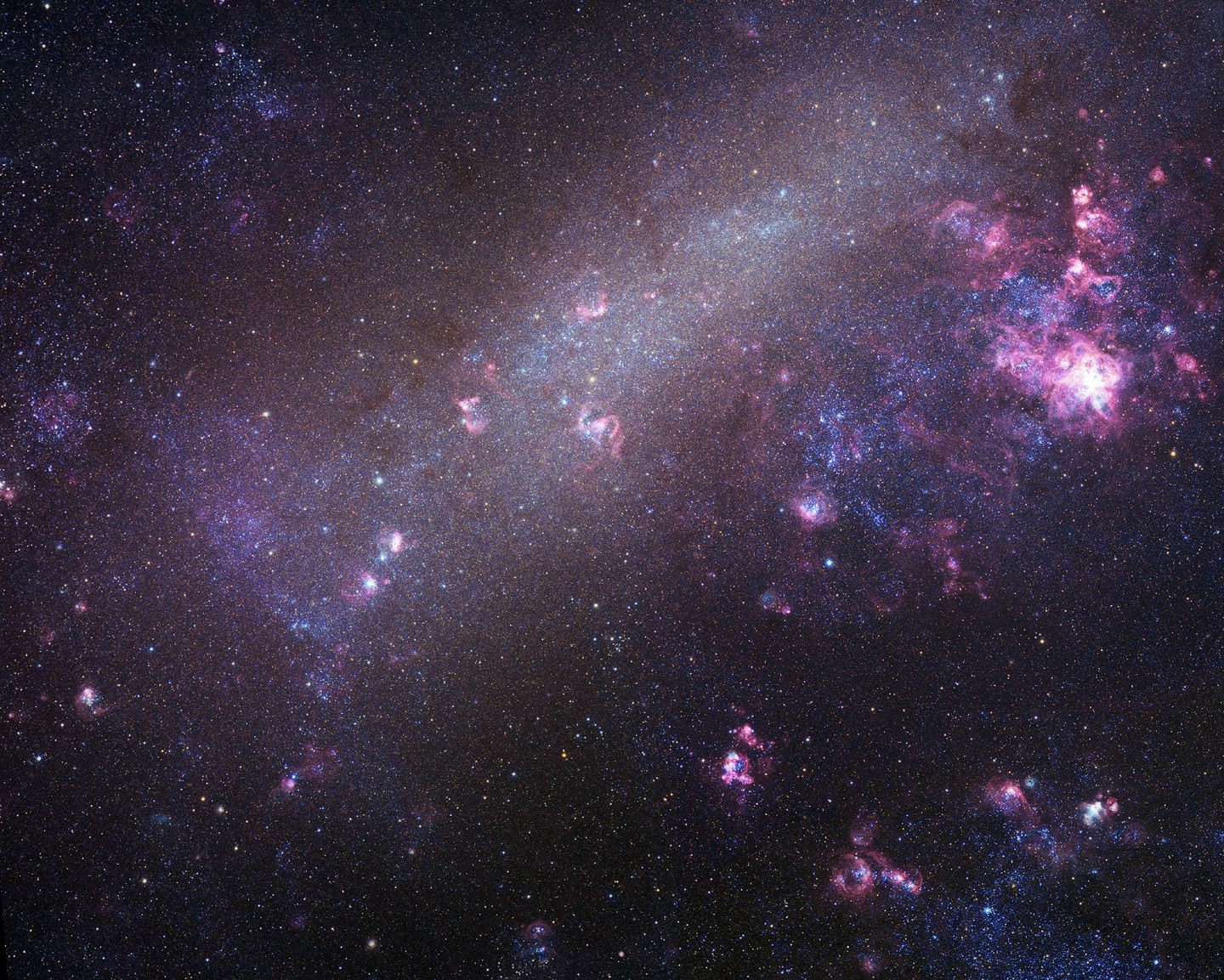The Magellanic Clouds are an oddity. Their relative velocity is suspiciously close to the escape velocity of the Milky Way system making it somewhat difficult for them to have been formed as part of the system. Additionally, their direction of motion is nearly perpendicular to the disk of the galaxy and systems, especially ones as large as the Magellanic Clouds, should show more orientation to the plane if they formed along side. Their gas content is also notably different than other satellite galaxies of our galaxy. The combination of these features suggests to some, that the Magellanic Clouds aren’t native to the Milky Way and were instead intercepted.
But where did they come from? Although the suggestion is not entirely new, a recent paper, accepted to the Astrophysical Journal Letters, suggests they may have been captured after a past merger in the Andromeda Galaxy (M31).
To analyze this proposition, the researchers, Yang (from the Chinese Academy of Sciences) and Hammers (of the University of Paris, Diderot), conducted simulations backtracking the positions of the Magellanic Clouds. While this may sound straightforward, the process is anything but. Since galaxies are extended objects, their three dimensional shapes and mass profiles must be worked out extremely well to truly account for the path of motion. Additionally, the Andromeda galaxy is certainly moving and would have been in a different position that it is observed today. But exactly where was it when the Magellanic Clouds would have been expelled? This is an important question, but not easy to answer given that observing the proper motions of objects so far away is difficult.
But wait. There’s more! As always, there’s a significant amount of the mass that can’t be seen at all! The presence and distribution of dark matter would greatly have affected the trajectory of the expelled galaxies. Fortunately, our own galaxy seems to be in a fairly quiescent phase and other studies have suggested that dark matter halos would be mostly spherical unless perturbed. Furthermore, distant galaxy clusters such as the Virgo supercluster as well as the “Great Attractor” would have also played into the trajectories.
These uncertainties take what would be a fairly simple problem and turn it into a case in which the researchers were instead forced to explore the parameter space with a range of reasonable inputs to see which values worked. In doing so, the pair of astronomers concluded “it could be the case, within a reasonable range of parameters for both the Milky Way and M31.” If so, the clouds spent 4 – 8 billion years flying across intergalactic space before being caught by our own galaxy.
But could there be further evidence to support this? The authors note that if Andromeda underwent a merger event of such scale would likely have induced vast amounts of star formation. As such, we should expect to see an increase in numbers of stars with this age. The authors do not make any statements as to whether or not this is the case. Regardless, the hypothesis is interesting and reminds us how dynamic our universe can be.


I like that! Andromeda has gone from being big brother to the neighborhood sloven.
And just to complicate the matter further, past interactions between M 31 and M 33 may have also come in to play, as several recent studies have examined this issue in some detail. Here’s a nice (2009) computer simulation of such an encounter compared to observation (brightly colored image): http://www.youtube.com/watch?v=6eZm3LHlyrs
These possible interactions are a fascinating topic with many implications for our home galaxy. This current paper caught my eye when it was recently posted, so thanks, Jon, for this writeup. Nice job. 🙂
There will be a future merger as well. It appears the Magellanic clouds and M33 will be like Poland between Germany and Russia in 1939.
In looking at this orbit of M33 around M31 it appears that spiral structure emerges at perigee. This is curious, for it suggests that tidal forces drew out the spiral arms.
LC
As a fanciful hyperbole; Perhaps Fast Dwarf galaxies Like the Magellanic Clouds are the only way to travel between larger Spiral Galaxies. Rather then being captured by the larger galaxies they are created by and flung out of the larger discs.
As observed in jets generated by quasars and micro quasars perhaps.
http://en.wikipedia.org/wiki/Superluminal_motion
Its a fanciful notion, but It would be cool to find that we live in a galactic community that can build spaceships as big as a Dwarf galaxy. I figure you would need all that matter to use as energy for the journey.
If I remember correctly isn’t there evidence that M31 has two galactic nuclei one of which is off-set from the centre? If so then a merger in the past isn’t too farfetched. But I could be mistaking M31 for something else. 🙁
@Paul,
I believe there are hints of a double nucleus in M31, but it’s not quite clear if the feature is actually real. Or, if it is real, if it’s a second nucleus. One of the more convincing alternative explanations is that there is an elliptical disk of stars orbiting the central black hole and the 2nd bright source is the apocenter of all those orbits- where the stars spend more of their time. Of course a 2nd nucleus is possible, but I think there are difficulties in getting two galaxies of comparable mass to merge (which would be the case if the two nuclei are not too dissimilar) without wrecking the spiral structure. We just don’t know enough yet.
Are we sure that the Clouds have actually been “captured” by the Milky Way, and that thay are not just “passing by”?
“There will be a future merger as well. It appears the Magellanic clouds and M33 will be like Poland between Germany and Russia in 1939.”
mmm. I perfect to think of them some chocolates and champagne that we give Andromeda below the intergalactic love making starts
Galaxies never have quickies.